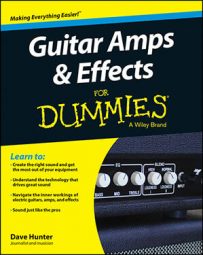Guitarists might not agree on much, but they can probably agree that there’s no one best sound. One player might rave over Carlos Santana’s tone in the 1970s and ’80s, while another might freak out about Mark Knopfler’s tone on the first couple of Dire Straits albums, and the next goes gaga over Slash’s playing on Appetite for Destruction.
They are extremely different, yet each is an acknowledged classic. As such, you can learn a little from listening to each of them, too.
Here is a look at those three classic artists’ rigs, used to create three very different — yet equally legendary — sounds:
Carlos Santana: From his Woodstock performance in 1969 right up to the present day, Carlos Santana’s gear has evolved quite a bit, yet he has always sounded like Santana and always earned attention for his tone.
Looking at his mid-’80s rig, when the main elements that he continues to use today came about, you find him achieving that hot, rich, singing, and über-sustainful sound with an early Paul Reed Smith guitar with humbucking pickups and a vibrato bridge, and a Mesa/Boogie Mark Series amplifier, with its cascading-gain lead channel. Other elements occasionally came and went, but these were responsible for the archetypal Santana tone.
Mark Knopfler: Knopfler made a huge impact on the guitar scene in the late ’70s with the release of Dire Straits’ eponymous debut album and the follow-up, Communiqué.
He and the band went on to even greater fame and success in the years that followed — during which his gear also changed up some — but he made the most impact with the clean-yet-rich Stratocaster tone of “Sultans of Swing” and “Lady Writer,” which he introduced into an otherwise rock and punk-populated guitar world.
His main ingredients there were a vintage early ’60s Fender Stratocaster and an old, brown early ’60s Fender Vibrolux amp, often with a compressor pedal in between.
Slash: The Gibson Les Paul was suffering what might have been an all-time low in its popularity in the mid-’80s before Slash brought it roaring back into the spotlight — along with big rock riffs in general (sans poodle hair) — on Guns N’ Roses’ 1987 debut album, Appetite for Destruction.
The guitar he used on the recordings and the subsequent tours was a reproduction made by Kris Derrig (that is, a copy) of a late-’50s sunburst Les Paul. Gibson probably owes a debt of thanks to the copy artists for once, considering the popularity of the Les Paul following Slash’s breakthrough.
Rammed through a Marshall JCM800 stack (and possibly another earlier Marshall in the studio), that faux Les Paul, with a little wah-wah now and then, created the sound that brought rock back to stay via songs like “Sweet Child O’ Mine” and “Paradise City.”

